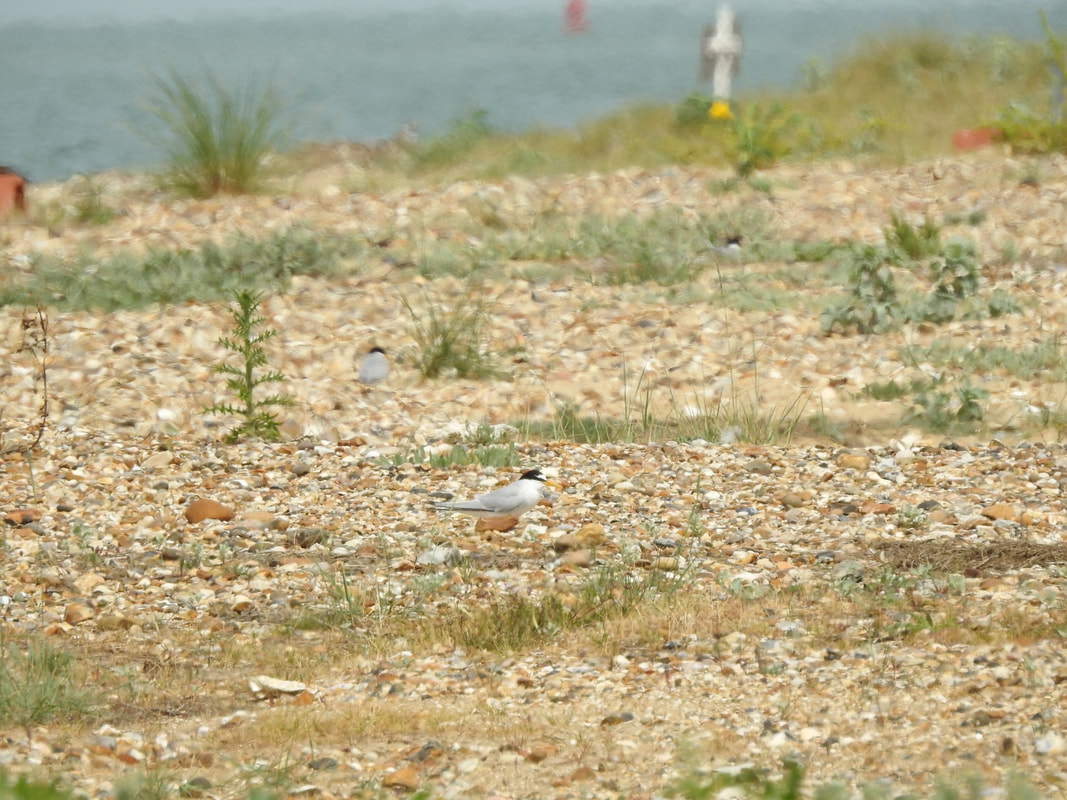|
Blog by Kieren Alexander, RSPB Site Manager for Old Hall Marshes It was a fantastic year on the newly created beach at Horsey Island. For those not familiar with this project, this was the creation of a new beach for little terns and other beach nesting birds to breed on, using 50,000 cubic metres of sand and shingle from the major channel deepening project carried out by Harwich Haven Authority. Along with providing breeding habitat for little terns and other beach nesting birds, the aim of the recharge scheme was also to help reduce erosion of the saltmarsh at Hamford water. This protected habitat, is vital for carbon storage, aiding in the fight against climate change. The project also assists in providing a natural wave break for the wider Hamford Water area, absorbing the energy before the waves reach the mainland and reducing pressure on the surrounding seawalls. Nesting on beaches, Little Terns are highly vulnerable to disturbance and erosion exacerbated by rising sea-levels throughout their breeding grounds. The project at Horsey Island, raises the height of a shingle beach out of the reach of the highest tides and hopefully secures this nesting location for the next 60 years. Below is a little video on how we created this new beach: Now in its 3rd year and approaching its 3rd breeding season, it is time report back on the results from 2023’s breeding season; in total 28 pairs of Little Terns successfully raised 42 chicks during this year’s breeding season at Horsey Island in Essex. Figures indicate that this year has seen the highest number of chicks taking to the skies since 2006. The site has also provided valuable habitat for other species including a Common Gull which fledged one chick this year from Horsey and is a rare occurrence in Essex and is possibly the first to have bred in Essex. This is an incredible result and a real success for all the organisations involved in the management of the beach from Tendring District Council, who warden the site and the wider Hamford water embayment, the landowners and HHA and the Environment Agency who helped fund the work. What has also been fascinating is watching the sand and shingle evolve over the three years, this winter has been a fascinating one for the beach, with a lot of strong north easterlies, the front edge of the beach has taken a lot of energy from the wave action and the higher-than-expected tides. Fascinatingly, in response to this and to maintain its stability beach and to absorb this energy, the beach has lowered and rolled back even further. Now that (hopefully) the strong storms are over, the relatively gentle wave energy should begin to pick up the height of the beach again as the crest of the beach will remain out of the water and shingle and sand will be picked up and forced up the beach. We will continue to monitor the beach both ecologically and geo-morphologically, with one final drone survey this Spring before we move to an annual monitoring drone flight to see how it is evolving over time and continued annual monitoring of the little tern population led by Tendring District Council and with the assistance of the landowners. In case you missed it, here is the link to first part of Horsey Island Recharge Project blog, the second part, the third part and the fourth part. Video credits: Jim Pullen/RSPB
0 Comments
|
Archives
April 2024
Categories
All
Photo credits: Oystercatcher by Katie Nethercoat (rspb-images.com)
LOTE Logo credits: Saskia Wischnewski |


